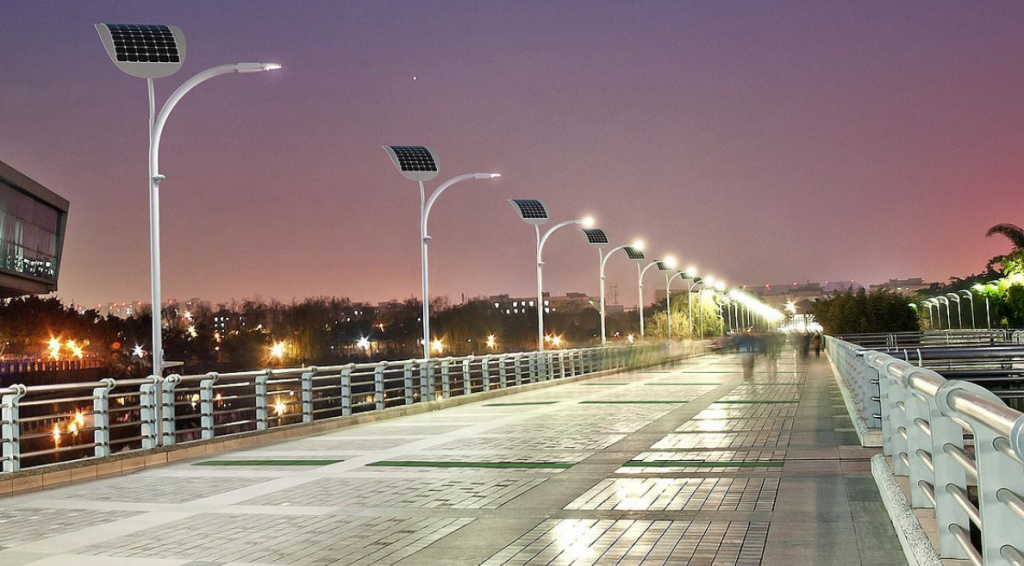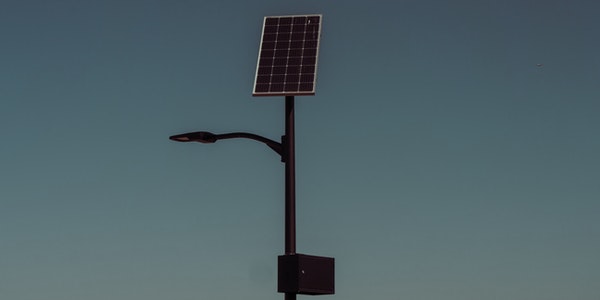1. Light Source Selection of Solar Street Lights:
The selection principle of solar street light source is that it is suitable for environmental needs, with high luminous efficiency and long life. Commonly used light source types are: tri-color energy-saving lamps, traditional nano lamps, electrodeless lamps, LEDs, etc. In view of the current situation of the global environment, driven by national policies, the most widely used solar street light sources are electrodeless light sources and LED light sources.
2. Selection of Lights:
The selection of lamps mainly considers reflectivity, illuminance and maintenance factor. The quality of road lighting can generally be measured by three indicators: road brightness, uniformity, and glare.
The quality of road lighting is reflected in:
(1) Brightness level: The average brightness of the road has different brightness requirements according to the road level. Generally, expressways and main roads require a brightness requirement of more than 2cd/m2, and secondary roads and auxiliary roads or residential roads are relatively low.
(2) Average illuminance: The average illuminance refers to the average value of all the illuminances of the road surface, which is the unit of illumination intensity, generally expressed by LM.
(3) Glare: Road lighting should strive to limit the uncomfortable glare to a certain range, generally expressed by G value. In general, G=7.
3. System Configuration Calculation:
The formula for calculating peak sunshine hours is, peak sunshine hours=A/(3.6X365)
4. Determination of Series Voltage:
The DC input voltage of the solar street light source is used as the system voltage, which is generally 12V or 24V. When the solar module voltage is 36V, the battery voltage is required to be no less than 2/3 of the module voltage. Therefore, the voltage of the battery, controller and light source should be selected at 24V.
5. Controller Selection:
The controller is generally made of stainless steel, which is beautiful and durable. The design of the charge and discharge controller takes into account light control, time control, overcharge, and overdischarge protection, and can achieve secondary energy-saving control, half-power lighting in a specified period of time. The battery can choose “maintenance-free lead-acid battery”, most of which will be built into the control box with the charge and discharge controller.
6. Capacity Calculation of Solar Panel:
For solar street lights, the overall system configuration formula:
P = light source power X light source working time / peak sunshine hours.
Among them, P is the power of the battery assembly, the unit is W, and the unit of the light source working time is H.
7. Calculation of Battery Capacity:
The first choice is to determine the type of battery and the storage days of the battery according to the local cloudy and rainy conditions. There are many rainy days in the south, and the storage weather is generally 5-7 rainy days.
Battery capacity calculation formula:
Battery capacity = load power X daily working time X storage days ÷ depth of discharge ÷ system voltage.
Among them: the unit of battery capacity is AH. The unit of load power is W. The unit of daily working time is H. And the unit of storage days is D. The depth of discharge is generally about 0.8, and the unit of system voltage is V.





